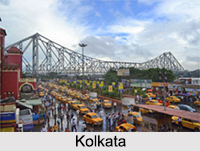 Metropolitan Cities in India are regarded as vital economical, cultural and political centres. Metropolitan cities in India have good connectivity with roadways, airways and railways. These cities in India are developed with the contemporary infrastructure in the field of education, culture and tourism.
Metropolitan Cities in India are regarded as vital economical, cultural and political centres. Metropolitan cities in India have good connectivity with roadways, airways and railways. These cities in India are developed with the contemporary infrastructure in the field of education, culture and tourism.
Regulations for Metropolitan Cities in India
The Constitution"s 74th Amendment Act, 1992 defines a metropolitan area in India as, "an area having a population of 10 lakhs or more, comprised in one or more districts and consisting of two or more Municipalities or Panchayats or other contiguous areas, specified by the Governor by public notification to be a Metropolitan area". According to this definition, a city has to fulfil the requirements mentioned in the clause in order to become a metropolitan area and be a part of the Metropolitan Cities in India.
 Division of Metropolitan Cities in India
Division of Metropolitan Cities in India
Cities with populations of 10 lakhs and above are referred to as the "Million Plus Cities". On the other hand, cities with more than 40 lakhs in populations are referred to as the "Mega Cities". Taking these into consideration, there are about 46 Metropolitan Cities in India. This number is based on the latest Census of 2011. Out of these 46 Metropolitan Cities in India, 8 of them are considered as "Mega Cities". The remaining 38 are considered as "Million Plus Cities".
The 8 Mega Metropolitan Cities in India are:
Mumbai, Maharashtra
Mumbai is the home of Indian Film Industry, known as Bollywood, Bombay Stock Exchange and skyscrapers. This capital city in western Indian state is popular for its festivals, culture, cuisines and music.
New Delhi,
Indian Union Territory
New Delhi; the modern capital of India, is noted for the bustling back streets, colonial sculptures, dusty and dazzling markets and glitzy malls.
 Kolkata, West Bengal
Kolkata, West Bengal
Kolkata known as City of Joy is the cultural capital where one can find the mixture of conservative and liberal philosophy in the midst of greenery and rich history.
Chennai, Tamil Nadu
Chennai is recognized as "Automobile</b> Capital of India", which was developed from the Pallava era and has many Hindu temples, eco parks, national parks and popular sea beaches.
Bengaluru, Karnataka
Bengaluru, referred as the Silicon Valley of India, is the third largest city and it is the abode of the Information Technology industries and Kannada film industry. Bengaluru is also gateway to the tourism destinations like Lalbagh Park, Cubbon Park, Puducherry, Nandi Hills and many others.
Hyderabad, Telangana
Hyderabad, a medieval capital of Nizams and Qutb Sahis, is now serving as a capital city of Telangana. This city is filled with Mughal architecture and traditional artwork of Bidri, paintings and markets.
Ahmedabad, Gujarat
Ahmedabad is considered as the largest city located near the bank of Sabarmati River. This city is popular for Sabarmati Ashrama, textile and pharmaceuticals industries.
Pune, Maharashtra
Pune is proud for being the world`s largest two-wheeler manufacturing city and it is an important centre of education, crafts, culture and art after Mumbai.
The 38 million metropolitan cities in India are Surat, Jaipur, Kanpur, Lucknow, Nagpur, Ghaziabad, Indore, Coimbatore, Kochi, Patna, Visakhapatnam, Kozhikode, Bhopal, Thrissur, Vadodara, Agra, Malappuram, Thiruvananthapuram, Kannur, Ludhiana, Nashik, Vijayawada, Madurai, Varanasi, Meerut, Faridabad, Rajkot, Jamshedpur, Jabalpur, Srinagar, Gwalior, Vasai-Virar, Allahabad, Dhanbad, Aurangabad and Kollam Altogether, these are 46 Metropolitan Cities of India. These cities are listed according to the populations..



















